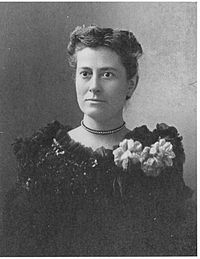The road to Williamina Paton Stevens Fleming’s discovery of the Horsehead Nebula in 1888 was a winding one. Born in Scotland in 1857, she worked as a teacher before marrying James Fleming in 1877 and moving to Boston with him. James deserted Williamina and their child, so she sought work as a maid for Edward Charles Pickering, the director of the Harvard College Observatory.
In 1881, Pickering hired Williamina at the observatory (possibly because, according to legend, he believed his maid could do a better job than his male assistants). Though she was hired to do clerical work, she helped created a classification system for stars based on the amount of hydrogen they contained. She also helped catalogue more than 10,000 stars for the Henry Draper Catalogue. In doing so, she discovered 10 novas 59 gaseous nebulas, and over 310 variable stars. And though her name was initially removed from the lists of discoveries, she was famous enough by the publication of the second Index Catalogue (1908) to have her name included, though she still was not given credit for her finding of the Horsehead Nebula.
By 1899, Williamina was the Curator of Astronomical Photographs, and in charge of dozens of women, known as the Harvard Computers – whose members included STEM Girls such as Annie Jump Cannon, Henrietta Swan Leavitt, and Antonia Maury – who performed mathematical classifications and processed astronomical data (and astronomical amounts of data) for the observatory. In 1906, Williamina became the first American woman to be made an honorary member of the Royal Astronomical Society. She is also the author of two books on astronomy.

